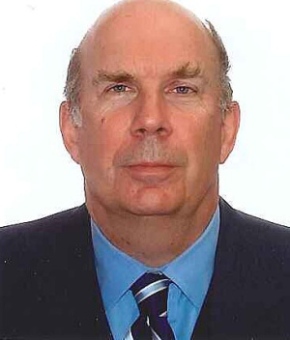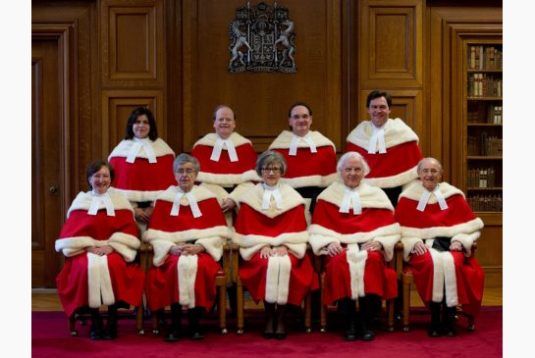Today, Prime Minister Stephen Harper appointed Justice Marc Nadon to the Supreme Court of Canada, and it is a sad day for gender equality. Some may argue that Justice Nadon was simply the most qualified applicant for the job, but the discussion about today’s appointment is not that simple. Canada’s top judges are all extremely intelligent and accomplished people. It is difficult to rank them according to a hierarchy of talent. Justice Nadon was a Quebec appointee, and there are currently two very knowledgeable and practiced women judges from this province that were expected to receive this appointment (one of them being Justice Marie-France Bich). And yet, somehow the very privileged white man is deemed the top candidate by another very privileged white man. This isn’t an issue of picking the absolute best candidate, but of gender inequality.
The first woman to be appointed to the Supreme Court of Canada was Justice Bertha Wilson in 1982. Canada had been a country for over 100 years at this point. She was followed by Justice Claire L’Heureux-Dubé in 1987, Justice Beverley McLachlin in 1989 (who became Chief Justice in 2000, the first woman to ever hold this position in Canada), Justice Louise Arbour in 1999, Justice Marie Deschamps in 2002, Justices Rosalie Abella and Louise Charron in 2004, and Justice Andromache Karakatsanis in 2011. Out of 84 Supreme Court judges in Canada, 8 of them have been women. It was not until the 2000s that Canada achieved some semblance of gender equality on the bench with 4 out of 9 of the judges being women. We have lost that achievement only a decade after having attained it.
Why is gender so important on the bench? This question is answered for me when I look at R v Morgentaler 1988 SCC. Morgentaler was a decision dealing with a Charter challenge to the criminalisation of abortion in Canada. Justice Wilson, the only woman on the bench at the time, was the sole judge to argue that abortion was a liberty right for women. The rest of the justices found a violation of security of the person, a part of section 7 that deals with physical and psychological security. Wilson, however, emphasised our freedom to make choices as a central part of the debate. As she states:
“The question then becomes whether the decision of a woman to terminate her pregnancy falls within this class of protected decisions. I have no doubt that it does. This decision is one that will have profound psychological, economic and social consequences for the pregnant woman. The circumstances giving rise to it can be complex and varied and there may be, and usually are, powerful considerations militating in opposite directions. It is a decision that deeply reflects the way the woman thinks about herself and her relationship to others and to society at large. It is not just a medical decision; it is a profound social and ethical one as well. Her response to it will be the response of the whole person.
It is probably impossible for a man to respond, even imaginatively, to such a dilemma not just because it is outside the realm of his personal experience (although this is, of course, the case) but because he can relate to it only by objectifying it, thereby eliminating the subjective elements of the female psyche which are at the heart of the dilemma….
…The fact that the decision whether a woman will be allowed to terminate her pregnancy is in the hands of a committee is just as great a violation of the woman’s right to personal autonomy in decisions of an intimate and private nature as it would be if a committee were established to decide whether a woman should be allowed to continue her pregnancy. Both these arrangements violate the woman’s right to liberty by deciding for her something that she has the right to decide for herself.” (pp. 171-172)
The powerful words of Justice Wilson show that a gendered perspective is an important one on the bench. Canada’s laws affect people differently depending on a variety of factors, one of them being gender. Without women’s voices in the courts, who will make sure that the law considers these perspectives adequately? For example, what would Canadian sexual assault laws look like today if Justice L’Heureux-Dubé hadn’t been so outspoken about rape myths? Known as the great dissenter, Justice L’Heureux-Dubé consistently and bravely advocated for law that reflected equality, and many of her dissents were turned into law by the government. A single woman helped to combat countless stereotypes about women and shifted the way we understand a massive portion of criminal law. And still some would say that representation on the court is unimportant. I suspect that these people have not learned much from Canadian legal history.
Today I have spoken about gender equality on the bench, but this is certainly not the only issue of diversity that our Supreme Court is struggling with. For example, there has never been an indigenous judge on the Supreme Court. There has never been an openly queer or trans voice on the bench. Disabled voices are extremely rare among judges in general. The voices of racialised people are extraordinarily limited, and no convention exists to ensure that they are granted regular seats. These are all failures on the part of Canada. Canadians are a diverse group of people, and while it is impossible to make sure that everyone has a direct voice on a nine person bench, we can do better than having 6 of the 9 positions being filled with white, upper-middle class, heterosexual, able-bodied men. It is a sad day for equality indeed.
Edit: Just as a quick clarification point, Justice Nadon was nominated at the time of this post, not appointed. It is unlikely, however, that he will not be formally appointed. Additionally, the gender imbalance addressed by this post actually started with the appointment of Justice Wagner. It was largely expected within the legal community that the next appointment would bring back that balance though that belief obviously did not pan out.



That was educational. I’m a law clerk and didn’t even know she saw the crux of the matter where the others didn’t. If Harper and the fetus porn people have accomplished anything it is making me an outspoken and hardlined feminist. Thanks for the lesson.